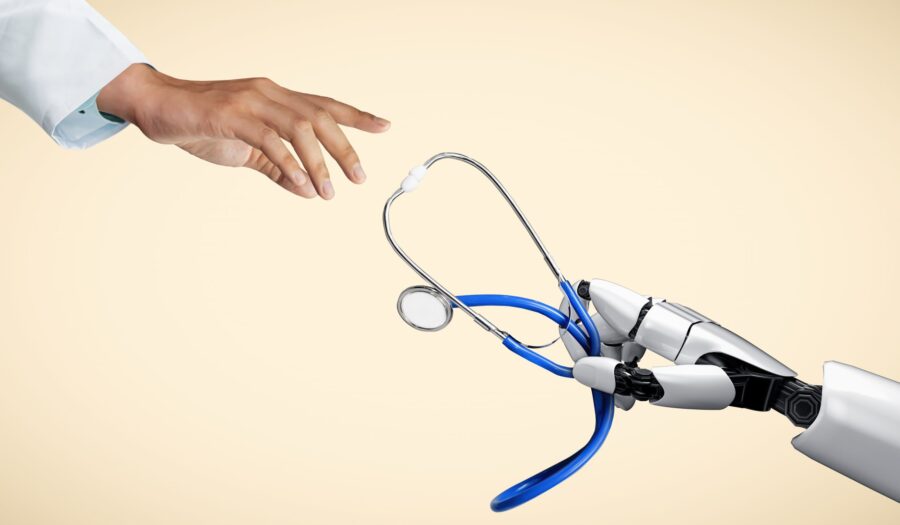
In the previous part, we discussed the current state of data imaging tools in healthcare and the future applications of these technologies. While increased access to information is invaluable to physicians, they can still be limited by their own ability to interpret, or the physical limitations of their surgical ability. In addition to augmenting the analytical aspect of patient care, technology can be adopted to overcome the human limitations of physicians.
Administrative Automation with RPA
Robotic Process Automation is a practice that seeks to use software robotics to streamline workflow and increase efficiency. When applied to a hospital setting, the benefits are easily seen when you realize that “Administrative work consumes one-sixth of U.S. physicians’ working hours,” according to a study by the National Institute of Health. Automating certain necessary, but tedious administrative tasks can free up hours for a group that are historically overworked.
Many hospitals are already automating their billing departments. Not only do hospitals have an enormous amount of paperwork internally, they also have to deal with insurance companies and all the nuances of medical billing. Paperwork can contain sensitive patient information and human reviewers can be a source for potential harm when entrusted to file that paperwork. Automated form processing can reduce the risk of human error in filling out the forms, as well as reducing the small, but present risk of sensitive information leaks.
NLP and Language Barriers
One human flaw that physicians face is their ability to communicate effectively with their patients. In situations where the patient is not fluent in the language, or they do not know how to describe their symptoms fully, an interpreter can be used to bridge the language barrier. This can be useful, but in cases where a language interpreter may not be available, it can be helpful to have backup systems that can easily parse the language and extract relevant data from it. Similarly, AI chatbots have grown exponentially in recent years and their ability to understand text inputs is making them a prime choice to replace many businesses’ customer service centers. In a healthcare application, these types of NLP applications can help physicians collect patient data and suggest possible diagnoses.
Surgical Applications
Along with the data processing applications, the field of robotics is making strides in the physical aspects of healthcare, namely surgery. In 2017, a viral video surfaced of the da Vinci Surgical System from the University of Chicago showcasing its extreme precision by operating on a grape. The video, actually from 2010, shows a surgeon using the surgical system with an advanced visual display, tremor reduction technology, and various robotic limbs that greatly enhance the ability of the surgeon. Certain procedures that require extreme precision and have higher risks benefit greatly, while most routine procedures don’t see as much benefit. The greatest benefit would be from freeing up surgeons to be able to treat more patients.
In the 12 years since this showcase, there have been many advancements in surgical robots. Human surgeons are still required for these procedures, but as the technology advances, it’s possible to imagine a future with fully automated operating tables.
